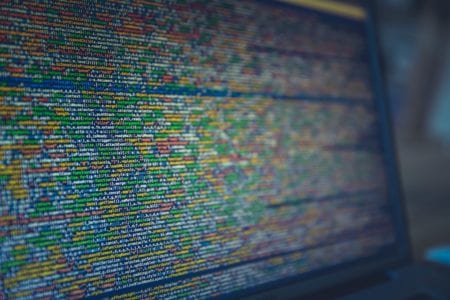Editor’s note: A version of this story originally appeared on GE Reports, a site that covers GE’s industrial transformation.
If you’ve read a business, financial, or computing magazine, or website, in the past 12 months there’s a high chance that their front pages, and homepages have been dominated by stories about bitcoin and blockchain.
Blockchain is often mentioned in stories on the emerging digital cryptocurrency bitcoin because (in simple terms) it is the technology behind bitcoin.
What Is Blockchain?
Blockchain is a simple, distributed, digital ledger. The ‘distributed’ feature of blockchain enables accountancy on a global scale and it’s this benefit that makes blockchain disruptive and revolutionary.
The ‘chain’ of records in blockchain applications ensures a live, constantly updated structure of shared information in real-time, that allows transactions to be verified by multiple parties across a distributed network, ensuring the accuracy of data.

Image: Unsplash
Security-wise, it is impossible to hack, forge, or corrupt a single record for personal gain, because records are held, and verified independently, by a network of ledgers. And with users of a system being the custodians of data, it removes the need for a middle man, or bank to verify your accounts – this function is done by thousands of users across a distributed network.
Blockchain’s distributed ledger is poised to revolutionize the way we tackle these challenges as it offers greater transparency in securing networks. Distributed ledgers, and the public history of transactions displayed by blockchain offers unrivaled oversight and audit trails, so if the system is breached, it will be instantly detected.
How Blockchain Could Transform Service
Industrial applications are also in development and Ben Beckmann, who works as the lead scientist in the complex systems engineering lab at GE Global Research in Niskayuna, New York, is one of the team investigating how bitcoin and blockchain can make a difference for the company.
He and others at GE discovered that the real magic of this new technology was blockchain’s public digital ledger function that keeps a chronological record of all bitcoin transactions. The technology could be used also for tracking trade, contracts, and even renewable energy.
Maja Vujinovic, technical product manager at GE Digital, is leading a push to explore and develop blockchain across the company. She’s looking at everything from purchase orders and budget reconciliation and parts tracking. “The bank receives a fee for every transaction,” Vujinovic says. “If we can remove the bank and establish a trust mechanism instead, that will save us a lot of money.”
Vujinovic is also exploring applications in additive manufacturing. Maintenance workers, for example, could use blockchain to make sure that a 3D printed turbine blade has the same geometry as the part it is replacing. In the energy space, it could allow an owner of solar panels to sell extra energy at the best price instantaneously. Factory owners could use it to track inventory and reduce costs.
“Today, blockchain is where the internet was in the 1990s,” Beckmann says. “I believe it has the same potential.”
GE forecasted that connected machines and the Industrial Internet can add $10 to $15 trillion to the global economy over the next two decades. Bitcoin could help speed up the process, but Vujinovic cautions that a lot still needs to be done.
Read the original at GE Reports.


Share this: